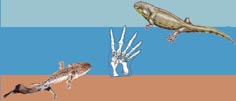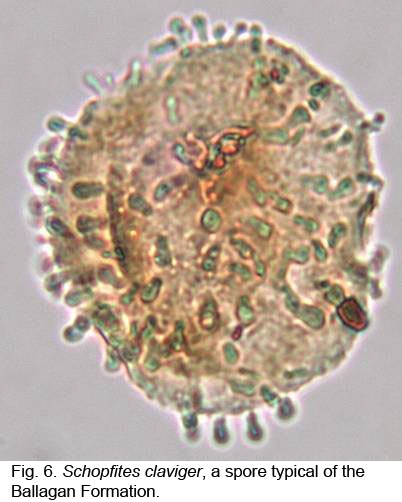Palynological Framework
The new tetrapod localities in the Scottish Borders and Northumberland are, with the exception of Burnmouth, short and isolated stratigraphic sections within the Ballagan Formation, and need to be placed in their correct chronological sequence, so as to understand the time-resolved evolutionary relationships between the different organisms.
Although the Ballagan Formation palynological assemblages are not particularly diverse, having a complete, cored succession from the borehole will enable us to establish a quantitative palynological zonation, and allow us to place the isolated localities approximately chronologically. The palynological zonation will be tied to the other stratigraphic data (see Stratigraphical Framework) in the borehole, giving further potential for higher resolution correlation using cycles or bundles of cycles.
In addition to the new tetrapod localities, we will study a number of representative Ballagan Formation sections from across the Midland Valley, including more remote sections, such as Bute and Great Cumbrae. This will give us a wider understanding of the palaeogeography and depositional environments.
We will extend the new palynological correlation to the coeval tetrapod localities in Blue Beach, Nova Scotia, using already-established Canadian palynological zonations.
A significant testable hypothesis is that low Early Carboniferous atmospheric oxygen levels drove tetrapods and arthropods into aquatic environments. This can be tested using the abundance of fossil charcoal.


